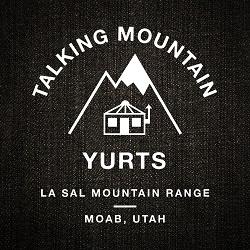Avalanche Conditions:
I’ve always preached that although most avalanches happen during storms, most avalanche ACCIDENTS happen on sunny days following storms, and especially on sunny Saturday’s or holidays following storms. Yesterday was a textbook example as hoards of people swarmed into the backcountry on New Year’s Day to enjoy the foot of new snow and sunny weather. By my count, yesterday there were at least 10 large, human-triggered avalanches in the backcountry, which caught at least 4 people with one injury and some lost equipment. The list is way too long to mention here, but I’ve read the list with the details onto our more detailed avalanche advisory line at 364-1591 and I’ll post the list on the web with some photos later this morning at the usual address www.avalanche.org, click on Salt Lake and then on Advisories. It should make for some entertaining and educational reading and viewing.
But here’s a short synopsis: One lone skier with his dog triggered a slide in Limelight, near Park City and injured his knee when he hit a tree. An out of bounds skier triggered one and rode it down in Dutches Draw near the Canyons and I watched as a line of other skiers kept jumping into the identical part of the slope that didn’t slide right next to it, which is pure, absolute craziness. Another skier triggered one in the Dog Lake Chutes area near Brighton and lost their skis and poles. One skier triggered and rode one on Ben Lomond Peak near Ogden. Three out-of-bounds skiers triggered another slide on Pine Cone Ridge near Park City, another one on Cardiac Ridge, Patsy Marley, Clayton Peak and South Monitor. Get the picture?
The problem is that sunshine makes people feel great but the weak layers buried in the snowpack don’t even know it’s sunny. They just feel the sudden, additional weight of a foot of snow and they’re cranky about it. Yesterday, absolutely everyone reported widespread collapsing of the snow as they traveled along. In fact yesterday, I think every square inch of snow collapsed that I traveled across all day long and one of those collapses from a completely flat ridge triggered a 3 foot deep, 80 foot wide avalanche 50 feet away on a steep rollover. That’s what I call sensitive, brittle snow. Only a few slopes have slid naturally on their own, but many slopes are just hanging in the balance just waiting for a trigger. They’re kind of like the tension in the air before a bar room brawl. You need to give somebody a thump to get things going.
For the past two weeks, we have been calling these conditions considerable danger, which means that human triggered avalanches are PROBABLE. Speaking of bars, most people who would never go into a bar where they had a probable chance of being beat up or killed, but for whatever reason, these same people don’t have a problem with it when they’re jumping into a steep, powder-filled slope on a sunny day. It’s really a simple game with simple rules. Just say no to terrain that we’re calling considerable.
- Twin Lakes Pass- skier triggered
- Ski area operations- widespread explosive, natural, and intentionally triggered avalanches
- Superior-natural from daytime heating
- Ogden Area Mountains- Cutler ridge natural avalanche
- Big Water Peak- natural avalanche
- Twin Lakes Pass- natural back towards Patsy Marley
- Wilson Fork- intentional ski cut
- Cardiac Ridge- remote triggered
- West Monitor (Tremper)- remote triggered from the flats
- Patsy Marley- Skier triggered, but not caught



